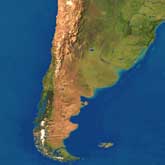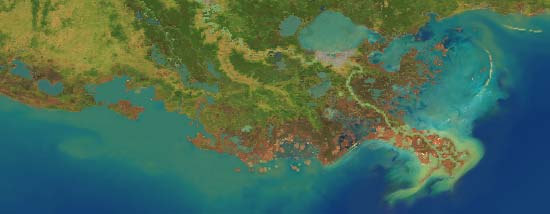WORLD SATELLITE IMAGERY AT 1,000 METER RESOLUTION

The full-resolution World coverage Satellite Imagemap, with a pixel resolution of 1 km for any location in the world, is 43,200 by 21,600 pixels - 2.3 gigabytes of data in 24 bit RGB colour. Printed as a poster at 150 pixels-per-inch, it would measure 24 feet wide by 12 feet high. The Imagemap is offered under license for single use and for multiple use.
CONTINENTAL SATELLITE IMAGERY
The Imagemap is offered for the entire World in six different resolutions ranging from 1 km, 2 km, 4 km, 8 km, 16 km and 32 km. For smaller coverage areas, separate Continental regions are available for North America, South America, Europe, Asia, Africa, Australia, Antarctica, and for User-defined specific regions designated in 20º x 20º tiles, in three resolutions ranging from 1 km, 2 km and 4 km. The 1km imagery is presented in geographical projection (equivalent to Plate Carree) and in Lambert Azimuthal Equal Area projection of each continent. Polar Stereographic is the projection used for the polar regions.
Special project covering Afghanistan - a full-colour 24 bit image-maps derived from Earth observation satellite data in 240 meter, 1,000 and 4,000 meter resolution. Images are geocoded in a simple cylindrical projection (latitude-longitude grid) for easy use with other geographic information such as digital maps, gazetteers and terrain models. Basic geographic overlays - country area mask, borders and placenames - are provided to aid orientation. Digitial terrain data is also available for the production of 3D graphics and animations.
To receive pricing, please send your request on the Info Request form for a prompt response or call 800-800-8560, international callers +1 804-443-9000 or email your request to info@digitalwisdom.net.
.
SAMPLE SATELLITE IMAGERY
To view representative blocks of satellite imagery at 1 km, 4 km and 8 km resolution, Review Samples on the sample satellite imagery web page showing detailed area of the USA / West Coast, Europe / Italy, South America / Chile, and the Persian Gulf / Middle East. In addition to the 1 kilometer satellite imagery, we also offer a range of very high resolution sources running from as detailed as 2 meter, thru 10, 15, 20 and 30 meter, 160 and 250 meter from various remote sensing sources. Check out the Hi-Res Satellite sample images on our Earth Observation Data Sources page.
Download the free sample of the World ImageMap - resolution is 32 kilometers per pixel - Download now - warning this is a large file - size 256 KB compressed JPEG - 2.61 MB uncompressed. This image may be used in non-commercial projects - for commercial use, please contact us.
TYPICAL PROJECTS
The Satellite Imagemap has been used in numerous educational and public information projects for television, exhibitions, print and multimedia publication. Some of the most recent projects that make use of the Satellite Imagemap are shown in our Customer and Product Showcase.
DEVELOPMENT OF THE SATELLITE IMAGEMAP
Although originally designed to track cloud patterns, weather satellites observe the Earth's surface
through gaps in the cloud cover on a daily basis. Receiving stations around the world regularly
process such data to give information on the strength of vegetation or the temperature of the ocean.
Planetary Visions has combined data from several of these satellite systems to construct a photorealistic
view of the Earth's surface which is readily understood. Areas of forest, mountain, desert and ocean
are clearly recognised in their natural colours, offering an alternative to traditional topographic
and political maps.

 The Mississippi Delta at a 1 km resolution. The Mississippi Delta at a 1 km resolution.
The satellite systems used offer frequent global coverage, but do not acquire images in true colour.
To simulate natural colours over the land, red and near-infrared wavelengths are used to differentiate
land cover types on the basis of their spectral reflectance characteristics. Ground-level, aerial and
orbital photography are then used to assign red, green and blue colour values to known feature types,
giving realistic land surface colour for anywhere in the world.
Ocean colour is derived from a combination of ocean depth and ocean chlorophyll observations.
Polar areas covered by sea ice are derived from individual optical images. On land, the courses of rivers
are merged in from a digital map database and the appearence of physical features has been enhanced by
hill-shading using a digital terrain model.
To minimise cloud-cover over the land, it was necessary to process a full year of satellite
observations - over 30 gigabytes of input data. Software was written to select the most cloud-free
parts from many overlapping images. So far, two man-years of effort have been spent on the
Satellite Imagemap and it is continually being improved as new data becomes available.
The Satellite Imagemap is held in a geographical coordinate system based on a latitude-longitude
grid for easy combination with ancillary data layers, e.g. digital terrain, water and political
masks, nighttime imagery. Linework such as coastlines, borders, rivers, roads and railways may be
directly overlaid without registration errors.
|

